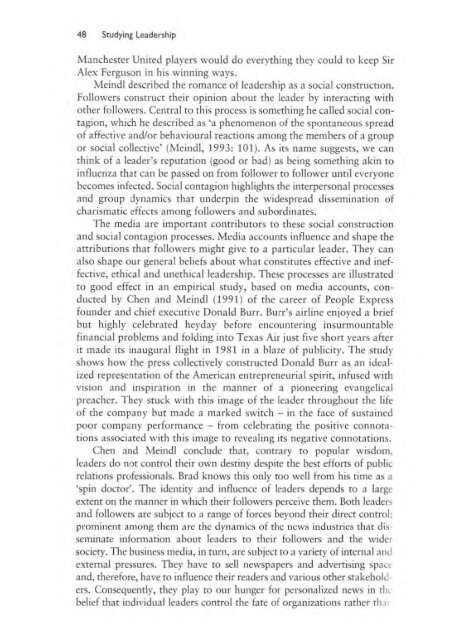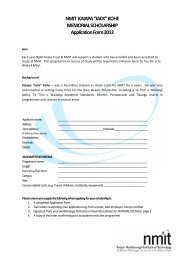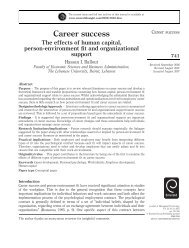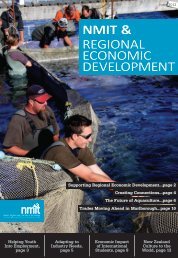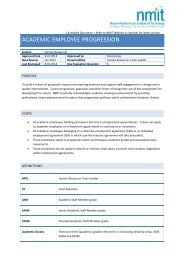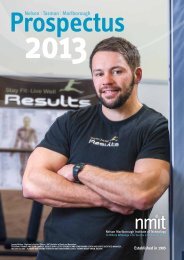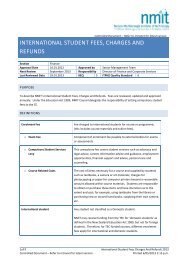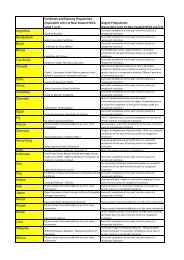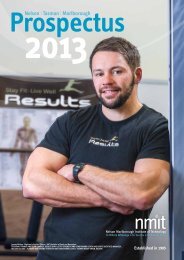Jackson Parry - Leadership, Chp 3, 41-60.pdf
Jackson Parry - Leadership, Chp 3, 41-60.pdf
Jackson Parry - Leadership, Chp 3, 41-60.pdf
- No tags were found...
You also want an ePaper? Increase the reach of your titles
YUMPU automatically turns print PDFs into web optimized ePapers that Google loves.
48 Studying <strong>Leadership</strong>Manchester United players would do everything they could to keep SirAlex Ferguson in his winning ways.Meindl described the romance of leadership as a social construction.Followers construct their opinion about the leader by interacting withother followers. Cemr::d to th is process is something he called social contagion,which he described as 'a phenomenon of the spontaneous spreadof affective and/or behavioural reactions among the members of a groupor social collective' (Meindl, 1993: 101 ). As its name suggests, we canthink of a leader's reputation (good or bad) as being something akin toinfluenza that can be passed on from follower to follower until everyonebecomes infected. Social contagion highlights the interpersonal processesand group dyna mics that underpin the widespread dissemi natio n ofcharismatic effects among fo llowers and subordinates.The media are important contributors to these social constructionand socia l contagion processes. Media accounts influence and shape theattributions that followers might give to a particu lar leader. They canalso shape our general beliefs about what constitutes effective and ineffective,ethical and unethica l leadership. These processes are illustratedto good effect in an empirical study, based 0 11 medi a accounts, conductedby Chen and Meindl (1991) of the ca reer of People Expressfounder and chief executive Dona ld Burr. Burr's ai rline enjoyed a briefbut highly celebrated heyday before encountering insmmollntablefinancial problems and folding into Texas Air just five short years afterit made its ina ugmal flight in 1981 in a blaze of publicity. The studyshows how the press collectively constructed Donald Burr as an idealizedrepresentation of the American entrepreneurial spirit, infused withvision and inspiration in the manner of a pioneering evangelicalpreacher. They stllck with this image of the leader throughout the lifeof the company but made a marked switch - in the face of sustainedpoor company performance - fro m celebrating the positive connota·tions associated with this image to revealing its negarive connotations.Chen and Meindl conclude that, comrary to popula r wisdom,leaders do nOt control their own destiny despite rhe best efforrs of publicrelations professionals. Brad knows this only too well from his time as a'spin doctor'. The identity and influence of leaders depends to a largeextent on the manner in which thei r fo llowers perceive them. Both leader ~and followers arc subject to a range of forces beyond their direct control:prominent among rhem


